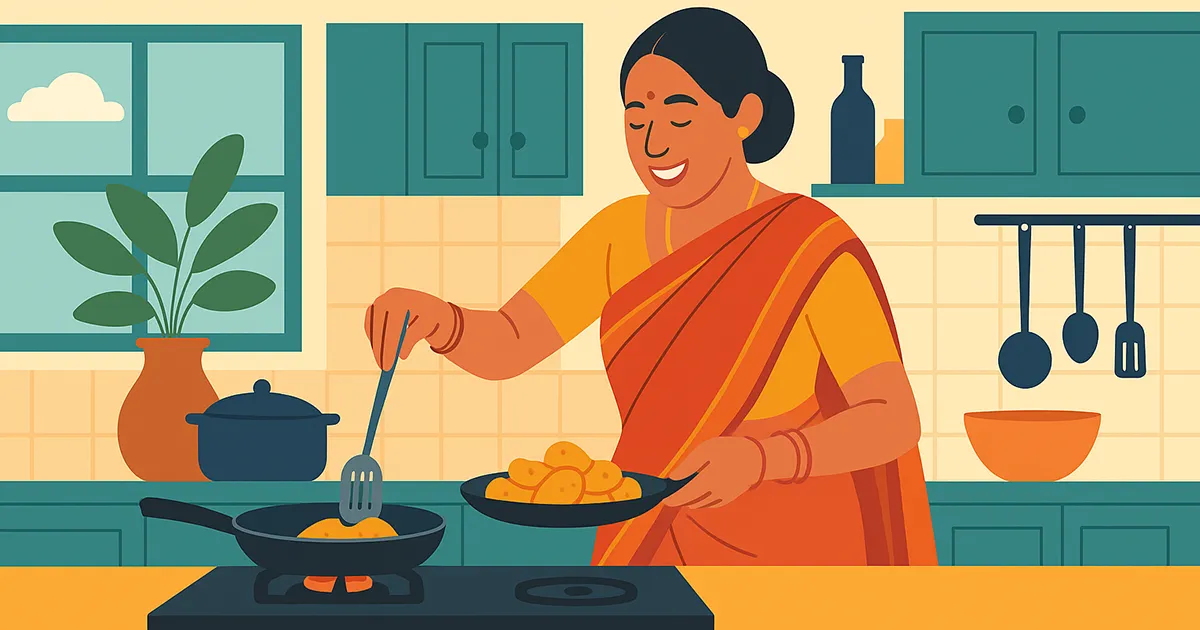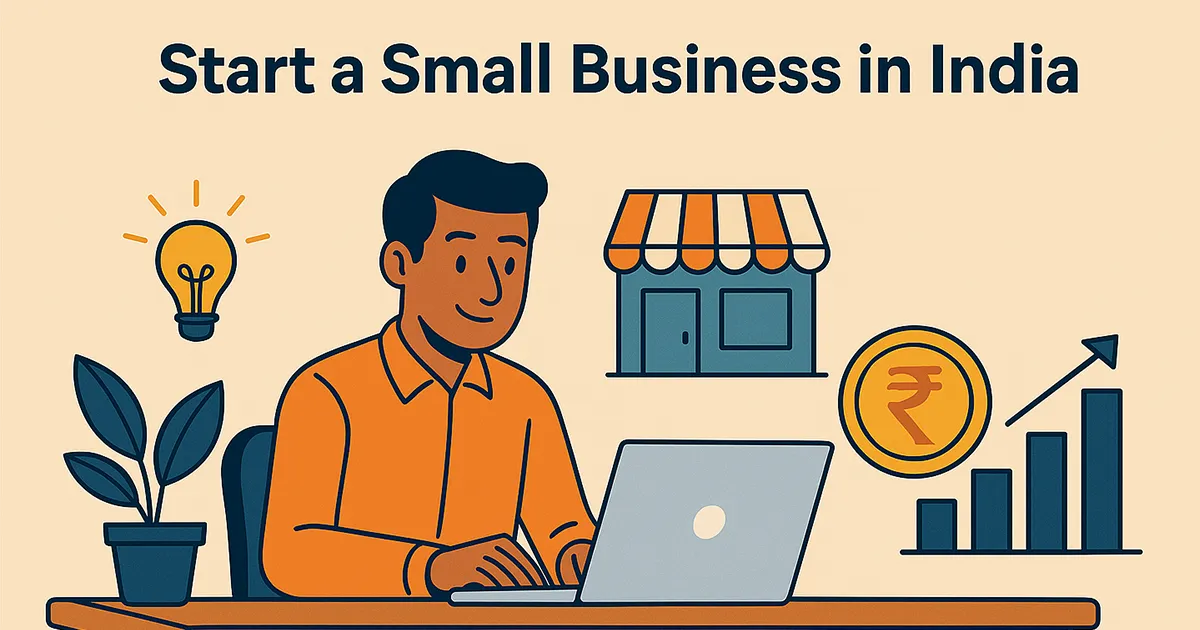
Starting a food business no longer means renting a shop or hiring staff. Today, thousands of Indians are building profitable food brands right from their kitchens—without opening a restaurant.
But here’s the catch: most fail because they treat it like a hobby, not a business.
This guide is for serious beginners—people who want to move beyond the idea and actually make it work. You’ll learn how to set up a cloud kitchen from home, which licenses you need, how to keep costs low, and how to avoid common mistakes.
1. Who Can Start a Cloud Kitchen?
2. Location Matters (Even If It's Invisible to Customers)
3. Licenses, Registrations & Legal Requirements
4. How to Build a Minimal Yet Effective Kitchen Setup
5. Menu Design for Delivery-First Success
6. Finding the Right Delivery Partners
8. Costing & Profit Calculation Basics
9. Costing & Profit Calculation Basics
The beauty of the cloud kitchen model is that it’s open to anyone—whether you’re a passionate home cook, a professional chef tired of restaurant hours, or a first-time entrepreneur looking to enter the food industry with small investment.
Here’s what actually matters:
Don’t worry if you’re not a trained chef. You can still build a profitable brand if you focus on one niche—like biryanis, momos, millet meals, or South Indian thalis. Success depends on serving food that tastes great and remains consistent across every order, especially when delivered.
What’s the Minimum Budget to Start from Home?
Here’s a ballpark estimate for a home-based cloud kitchen setup:
| Expense Category | Estimated Cost (INR) |
|---|---|
| FSSAI License (Basic) | ₹100 – ₹2,000/year |
| Kitchen Equipment | ₹10,000 – ₹30,000 |
| Packaging Materials | ₹3,000 – ₹5,000/month |
| Ingredients & Raw Stock | ₹5,000 – ₹10,000 |
| Branding & Logo Design | ₹1,000 – ₹3,000 |
| Delivery App Registration | Free (commission-based) |
| Misc (utilities, gas, etc.) | ₹2,000 – ₹5,000 |
| Total Initial Setup: ₹25,000 to ₹50,000 (You can start lean and scale as orders grow.) | |
If you’re unsure about scaling later, read Which Cloud Kitchen Model Fits You? to understand shared kitchens, multi-brand setups, and aggregator models.
You might assume that since customers never visit a cloud kitchen, the location doesn’t really matter. That’s partly true—but only to an extent. In reality, where your kitchen is based still affects your business in major ways.
Why Delivery Radius Affects Orders
Food delivery platforms like Swiggy and Zomato assign a virtual delivery zone based on your pin code. Your kitchen will only be shown to customers within that radius. If you’re in a busy neighborhood where people regularly order online, your visibility and order volume naturally go up.
Areas with dense residential housing, offices, or student populations usually perform better. If you’re starting from home, analyze your area’s food ordering patterns before you invest time or money.
Can You Start from Any Type of Home?
Yes, you can. Whether you own the place or live in a rented flat, a home kitchen can work. Just remember:
In many cities, shared kitchen setups are gaining traction as a cost-effective option for food entrepreneurs. These rental kitchens come with professional-grade equipment and can be booked on a flexible, hourly or daily basis. They’re worth exploring if your home isn’t ideal for daily food production.
A lot of first-time food entrepreneurs jump in excitedly—only to be blocked when delivery apps ask for documents, or worse, when complaints arise from lack of proper registration. Even for a home kitchen, some form of licensing is legally required.
FSSAI Registration
FSSAI (Food Safety and Standards Authority of India) registration is a must for anyone preparing food for sale. The basic version is enough if your annual turnover is under ₹12 lakhs, which applies to most home-based cloud kitchens in the beginning.
Having an FSSAI license adds trust and credibility to your brand—even if you’re just starting from home.
GST and Business Registration
If your revenue exceeds ₹20 lakhs a year, GST registration becomes mandatory. But even if you’re earning below that, it may help to register early for future scaling and to work with vendors who charge GST.
As for business structure, many home-based kitchens operate as sole proprietors initially. Once your revenue grows or if you plan to bring in investors, you can consider registering as a private limited company or LLP.
More details on structuring and budgeting can be found in our full Legal & Financial Checklist Before You Launch.
When you’re working from home, space and resources are limited. The good news? You don’t need a commercial-grade setup to start. You just need to be organized, efficient, and clean.
Kitchen Layout Matters
Try to divide your kitchen into three zones:
Keeping these zones separate—even in a small space—helps reduce errors, speeds up order fulfillment, and maintains hygiene standards.
Equipment Essentials for Home-Based Cloud Kitchens
Start with the basics. You can add advanced tools later as your volume increases.
If you’re planning a high-volume or multi-cuisine operation, your needs may differ. But for a single-brand, small-batch kitchen, these basics will do the job.
Keep in mind that some food delivery apps may also require you to submit kitchen photos during registration, so maintaining a clean, organized space isn’t just good practice—it’s often part of the onboarding process.
Designing a menu for a cloud kitchen is very different from running a restaurant. In a delivery-only model, your dishes need to taste great after 30 minutes in a box, travel well, and remain profitable.
Focus on Food That Delivers Well
Some dishes don’t survive delivery. For example, crispy items like dosas or fries often become soggy. Creamy pastas or thin gravies may leak if not packed carefully. On the other hand, biryanis, rolls, parathas, gravies with rice, and meal boxes tend to hold up well in transit.
Here’s what to consider while finalizing your menu:
If you’re just starting, keep the menu short. A focused 5–7 item menu allows better inventory control and helps you maintain consistent quality.
As you grow, you can add more dishes or even create a second virtual brand under the same kitchen.
Once your food is ready to reach customers, the next step is choosing how to deliver. Most small cloud kitchens partner with major food aggregators—Zomato and Swiggy being the biggest in India. Some kitchens also use logistics partners like Dunzo or Porter for direct delivery.
Registering on Zomato and Swiggy
Both platforms allow home kitchens and small businesses to register. Here’s what they typically require:
Onboarding usually takes 1–2 weeks. Once approved, your brand appears in local search listings, and the platform handles delivery through their fleet.
While convenient, keep in mind:
Alternatives: Dunzo, WhatsApp, and Direct Orders
Some home kitchens operate independently by using WhatsApp orders or Instagram DMs, and then deliver using Dunzo or similar apps. This gives you full control, zero commission loss, and the chance to build personal customer relationships—but it also requires more manual effort and time.
Eventually, many kitchens use a hybrid approach: aggregator listings for reach and direct orders for repeat customers.
In the cloud kitchen world, your packaging and online presence are the only “storefront” the customer sees. That means your food can be great—but if your branding is forgettable, customers may not return.
Start With the Basics
Social Media Helps Build Trust
Even for a small home-based cloud kitchen, having a simple Instagram or Facebook page adds legitimacy. Post real images of your dishes, customer reviews, behind-the-scenes kitchen work, and daily offers.
Most people will check your social profile before ordering again. A clean feed with good photos and positive feedback builds confidence.
Don’t Ignore Packaging
Your packaging is part of the experience. Clean, spill-proof boxes, branding stickers, and thoughtful touches (like handwritten thank-you notes or spice level options) go a long way in building loyalty.
If you want to go deeper into visibility, and retention tactics, check out our detailed guide on Marketing Your Cloud Kitchen: How to Stand Out in a Crowded App Market.
One of the biggest mistakes new cloud kitchen owners make is underestimating their costs—or not tracking them at all. If you don’t know your numbers, it’s impossible to know if you’re making money or slowly losing it.
Understand Your Real Costs
Your cost per order isn’t just the price of ingredients. It includes:
Once you’ve tracked your expenses for a few weeks, divide your total cost by the number of orders to get a realistic per-order cost. Now compare that to your selling price.
Know Your Margins
A healthy food business aims for 30% to 50% gross margin per order, depending on scale. Here’s a rough example:
One of the biggest mistakes new cloud kitchen owners make is underestimating their costs—or not tracking them at all. If you don’t know your numbers, it’s impossible to know if you’re making money or slowly losing it.
Understand Your Real Costs
Your cost per order isn’t just the price of ingredients. It includes:
Once you’ve tracked your expenses for a few weeks, divide your total cost by the number of orders to get a realistic per-order cost. Now compare that to your selling price.
Know Your Margins
A healthy food business aims for 30% to 50% gross margin per order, depending on scale. Here’s a rough example:
| Item | Amount (₹) |
|---|---|
| Selling Price | ₹200 |
| Ingredient + Packaging | ₹70 |
| Platform Commission (25%) | ₹50 |
| Other Costs | ₹20 |
| Profit per Order | ₹60 |
That ₹60 per order sounds decent—until you realize you need to sell at least 200+ orders per month just to hit basic income goals. That’s why keeping costs low and pricing smartly is essential.
Once your home-based kitchen starts getting consistent orders, positive reviews, and regular customers, the next step is scaling. But scaling doesn’t mean jumping into a massive commercial space right away.
Signs You’re Ready to Scale
How to Scale Smartly
There are several ways to expand beyond your home kitchen:
Each model has pros and cons depending on your budget, risk appetite, and local demand.
Starting a cloud kitchen from home isn’t just a low-cost experiment—it’s your launchpad to building a serious food brand. You’re not waiting for a big investor or fancy restaurant space. You’re proving your concept with real customers, real feedback, and real hustle.
But remember, success doesn’t come from great food alone. It comes from treating every order like it matters, tracking every rupee like it counts, and building every process like you’re going to scale tomorrow.
Stay sharp. Be consistent. Keep your kitchen clean, your margins healthy, and your customers happy.
Share with like-minded people!
Lorem Ipsum is simply dumy text of the printing typesetting industry lorem.

Learn how to set up a profitable microgreens farming system from home. This guide covers equipment, growing tips, costs, and earning potential.

Learn how to set up a profitable microgreens farming system from home. This guide covers equipment, growing tips, costs, and earning potential.

Discover 10 smart and easy ways to make money using ChatGPT AI tools—even if you're a beginner. Start earning from content, freelancing, and more today.

Which Loan Type is Right for You —Different Types of Loans Explained Which Loan Type is Right for You? —Different Types of Loans Explained The stock market is often seen as a fast-moving world where traders buy and sell shares within minutes,...

Which Loan Type is Right for You —Different Types of Loans Explained Which Loan Type is Right for You? —Different Types of Loans Explained In today’s world, starting a business doesn’t always require lakhs of rupees or big offices. Many successful entrepreneurs...

This comprehensive guide breaks down the steps to buy, enhance, and sell domain names for substantial profit. Learn niche research, valuation tips, negotiation techniques, and platform insights to maximize your returns in domain flipping.